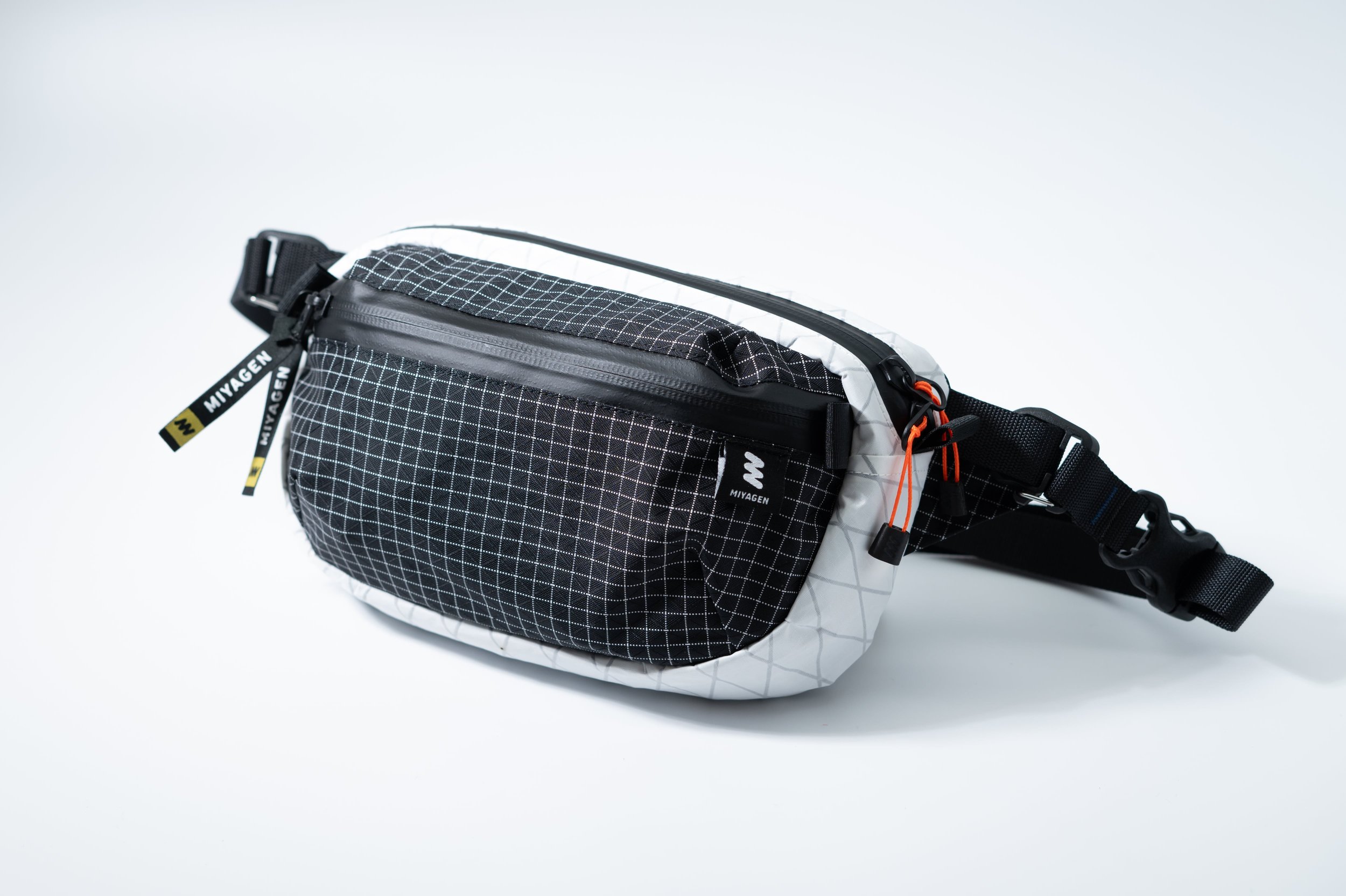 Image 1 of 17
Image 1 of 17

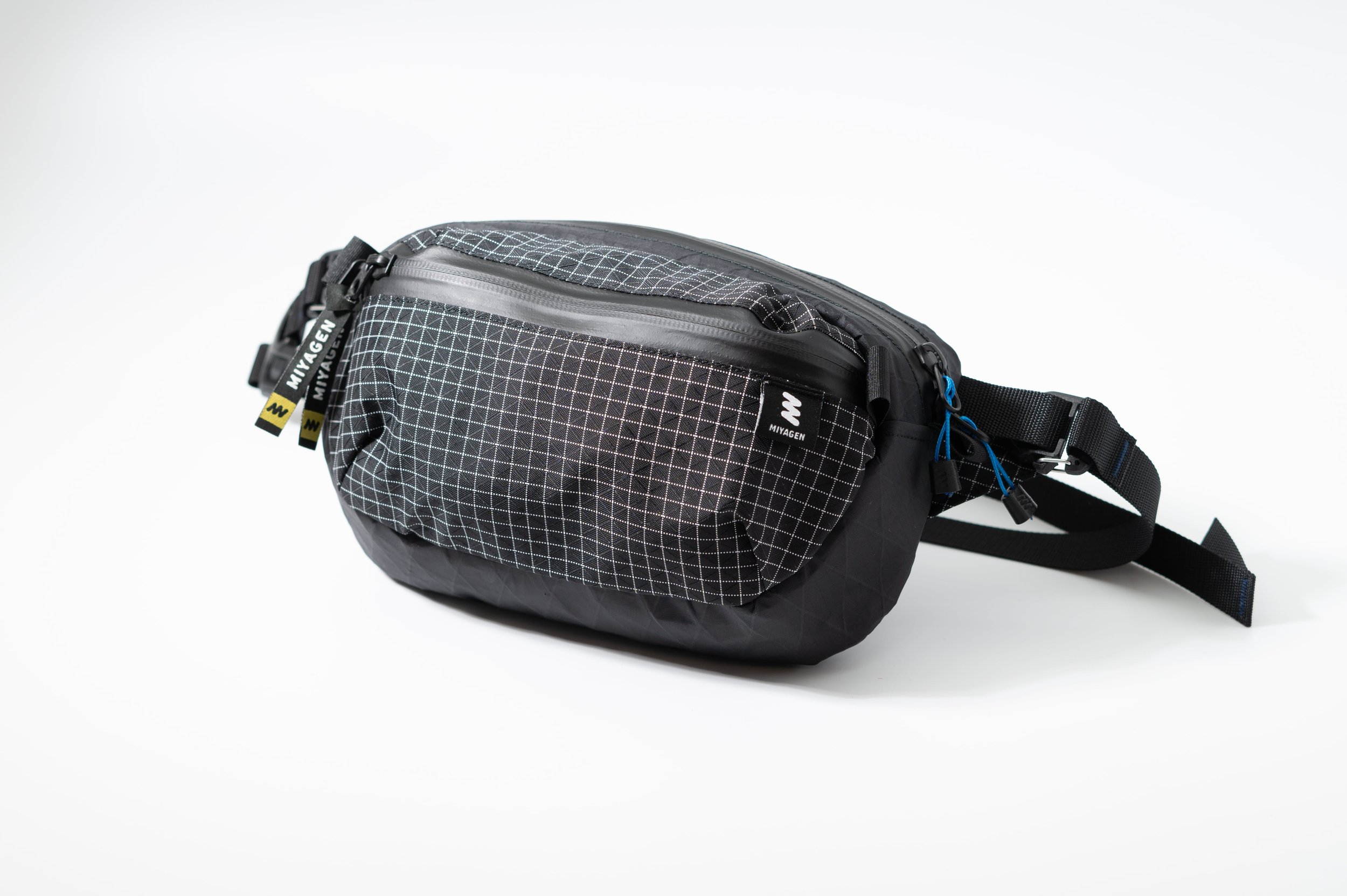 Image 2 of 17
Image 2 of 17

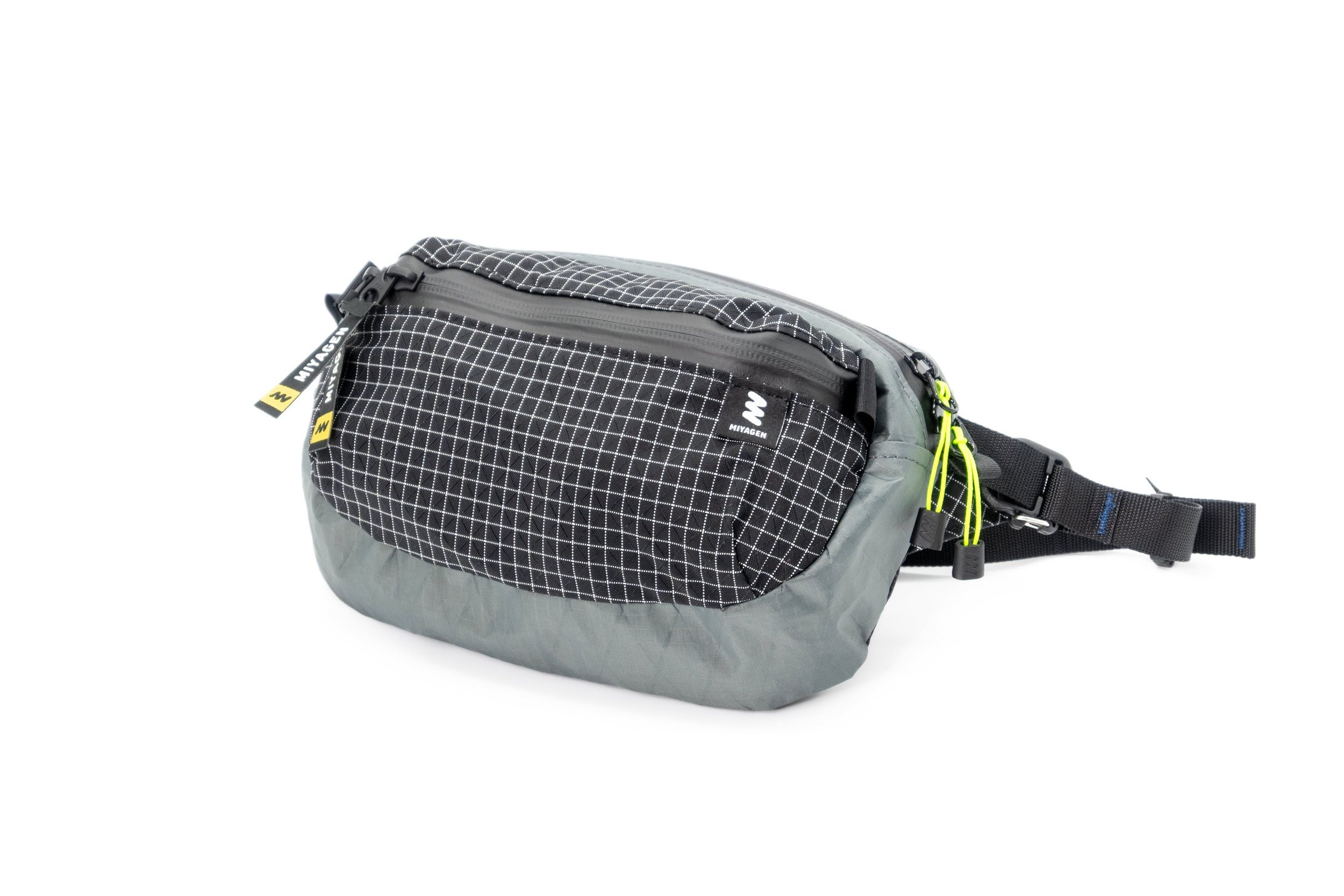 Image 3 of 17
Image 3 of 17

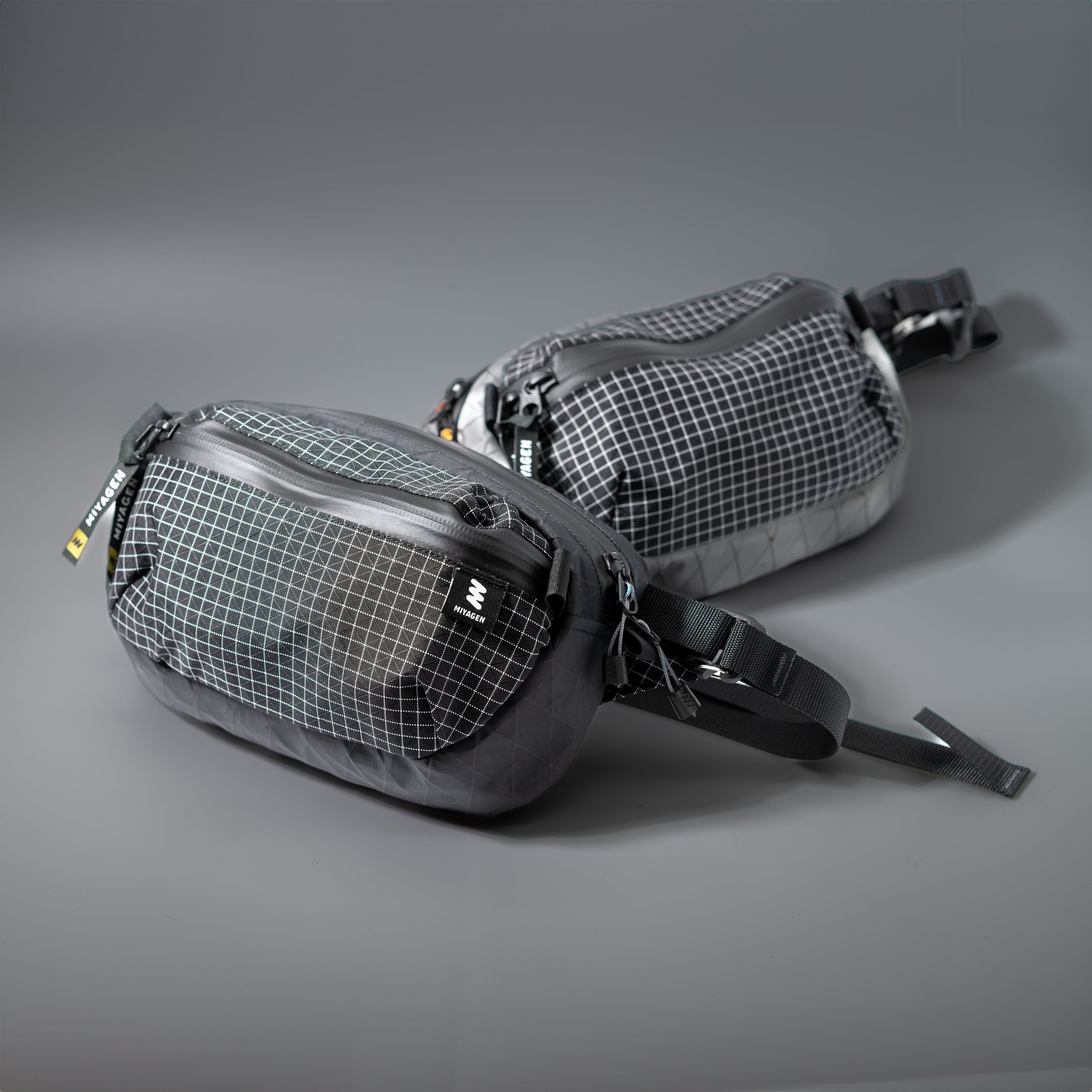 Image 4 of 17
Image 4 of 17

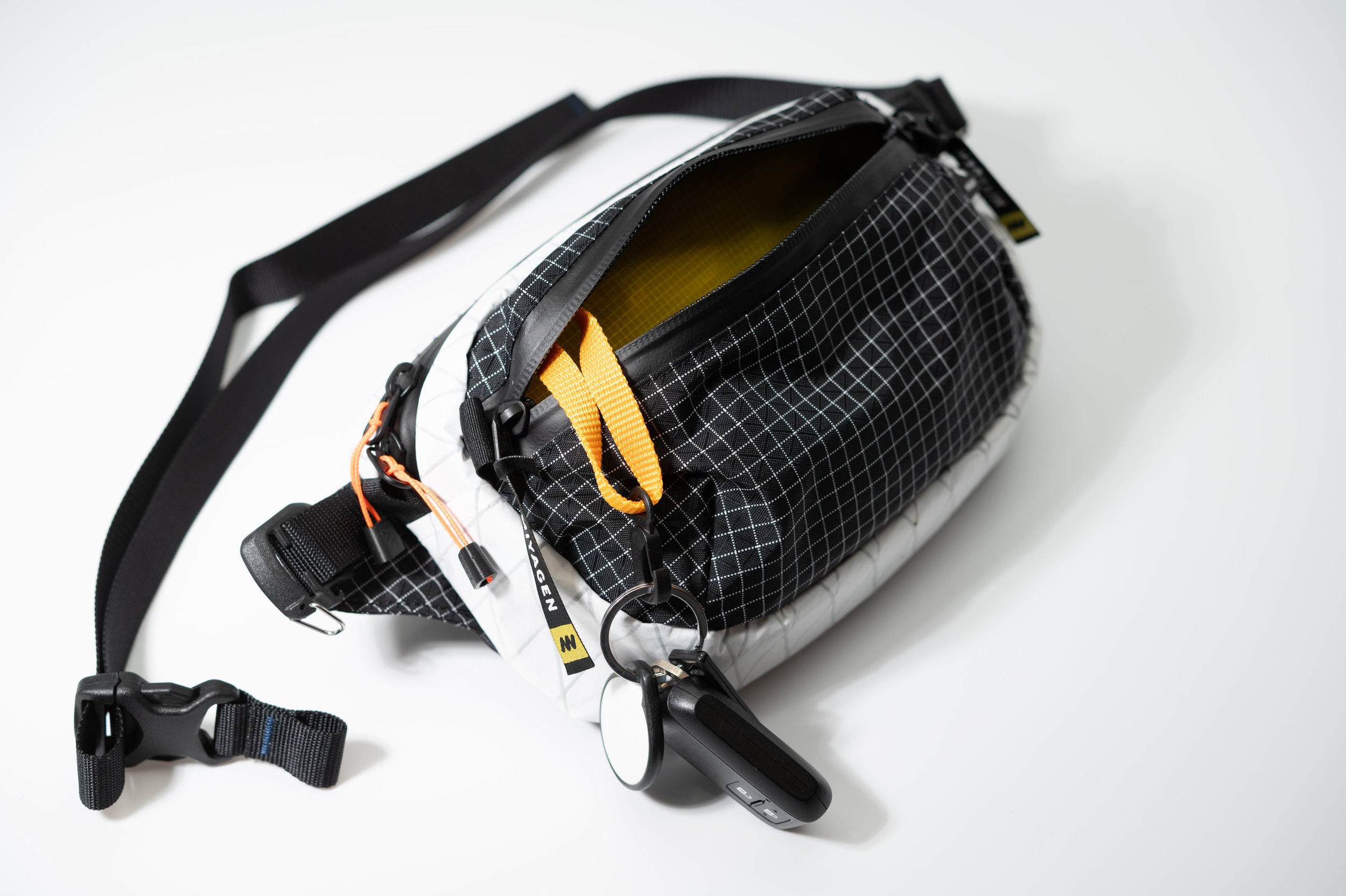 Image 5 of 17
Image 5 of 17

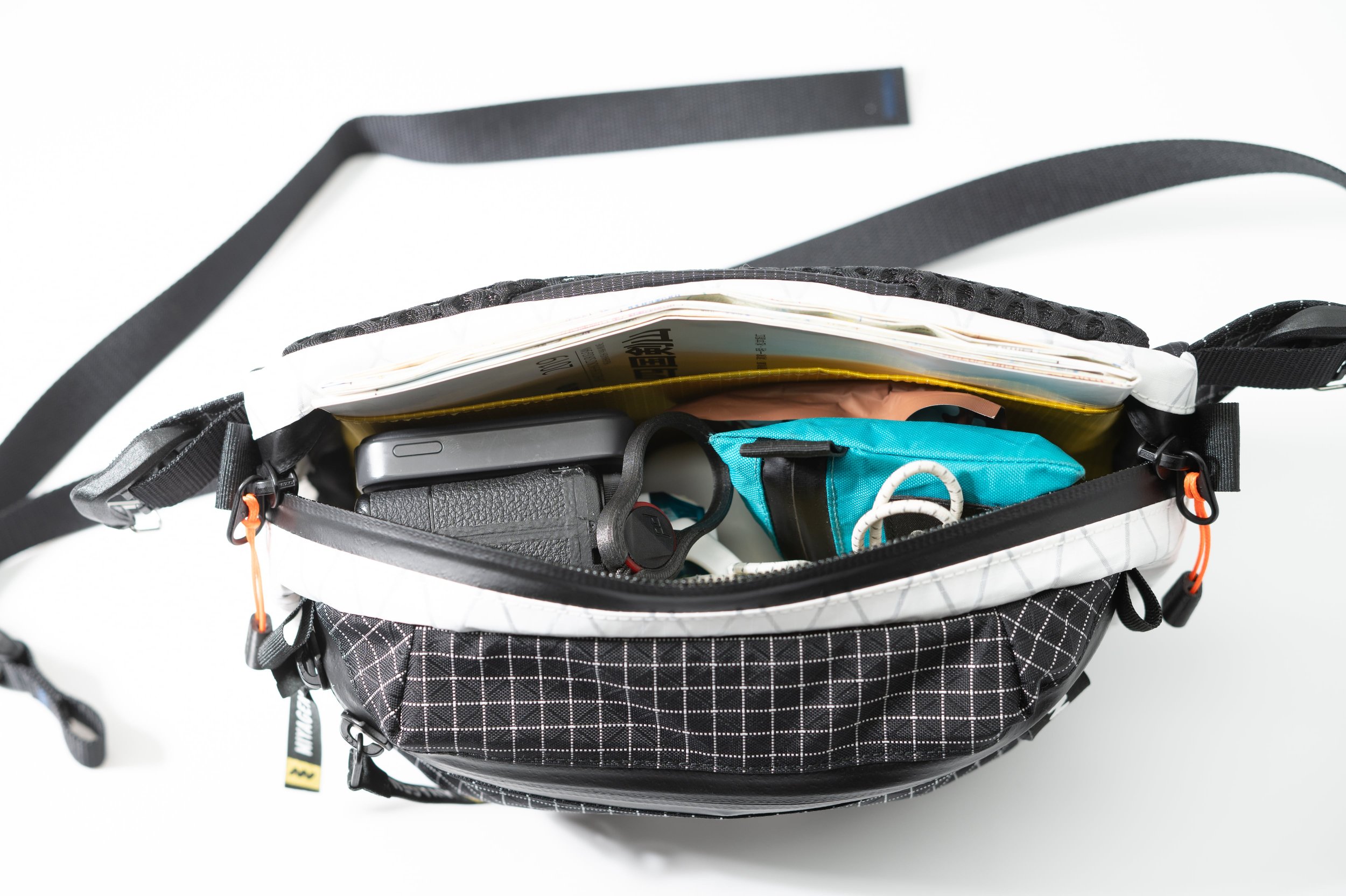 Image 6 of 17
Image 6 of 17

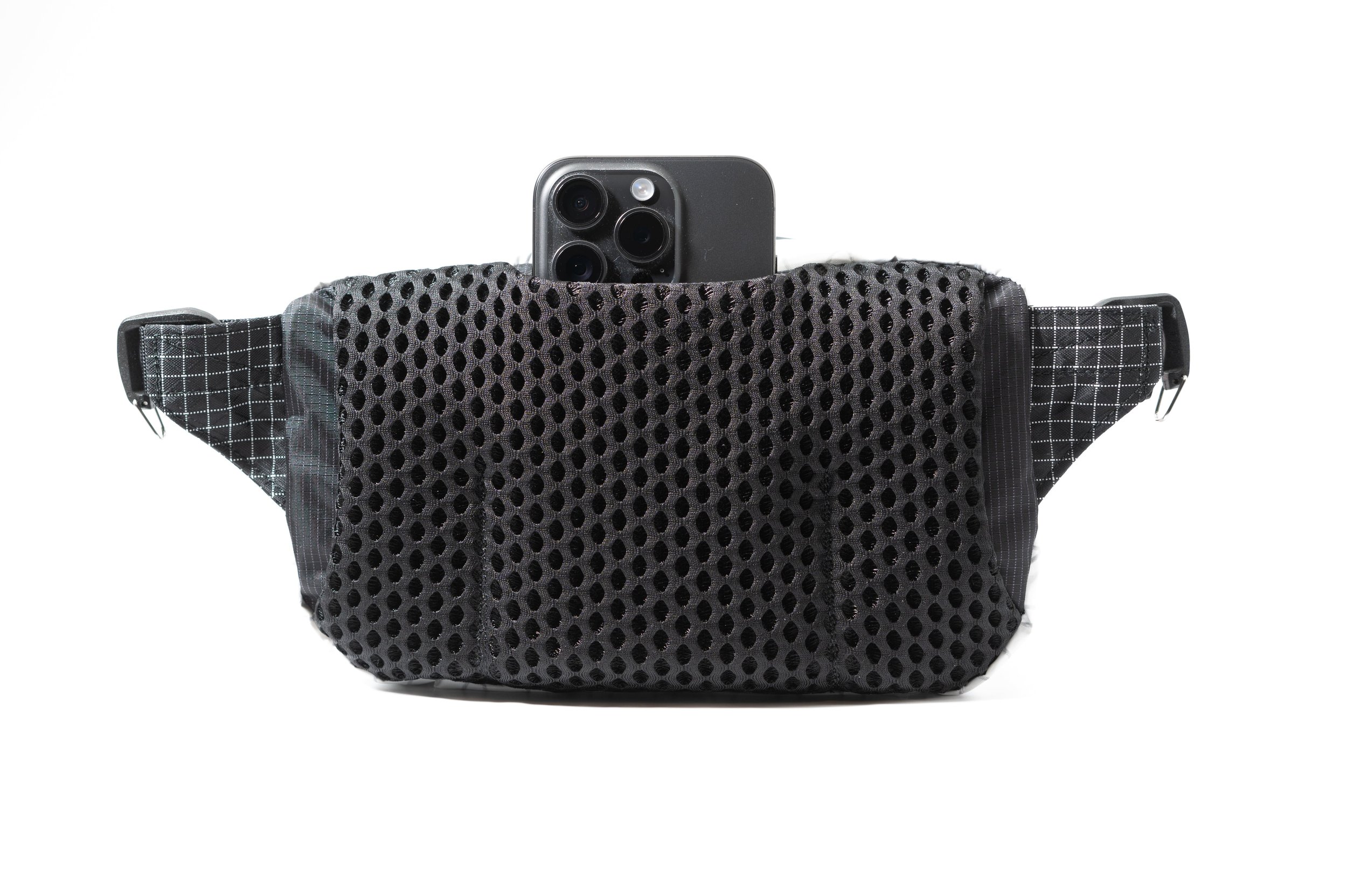 Image 7 of 17
Image 7 of 17

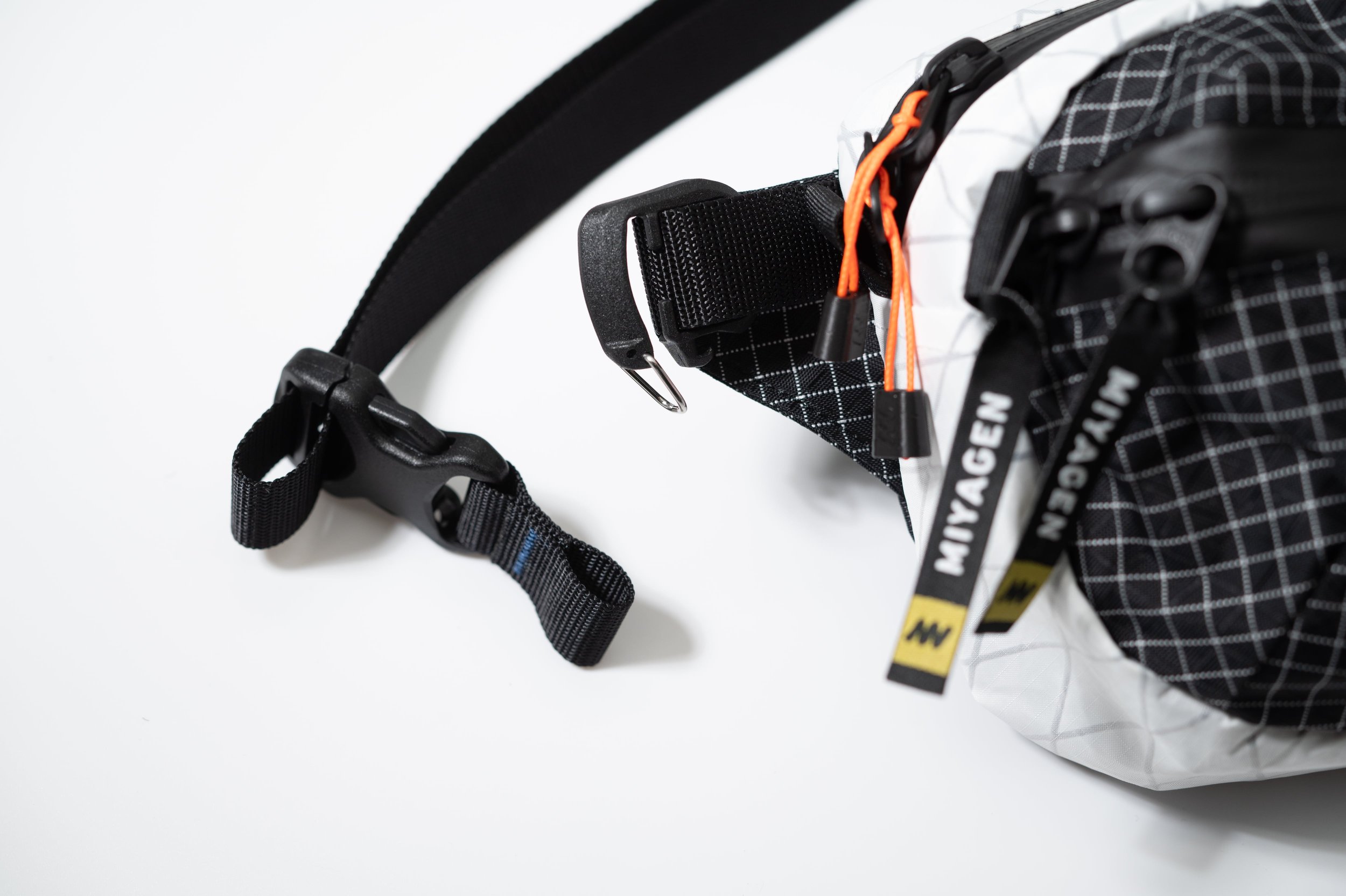 Image 8 of 17
Image 8 of 17

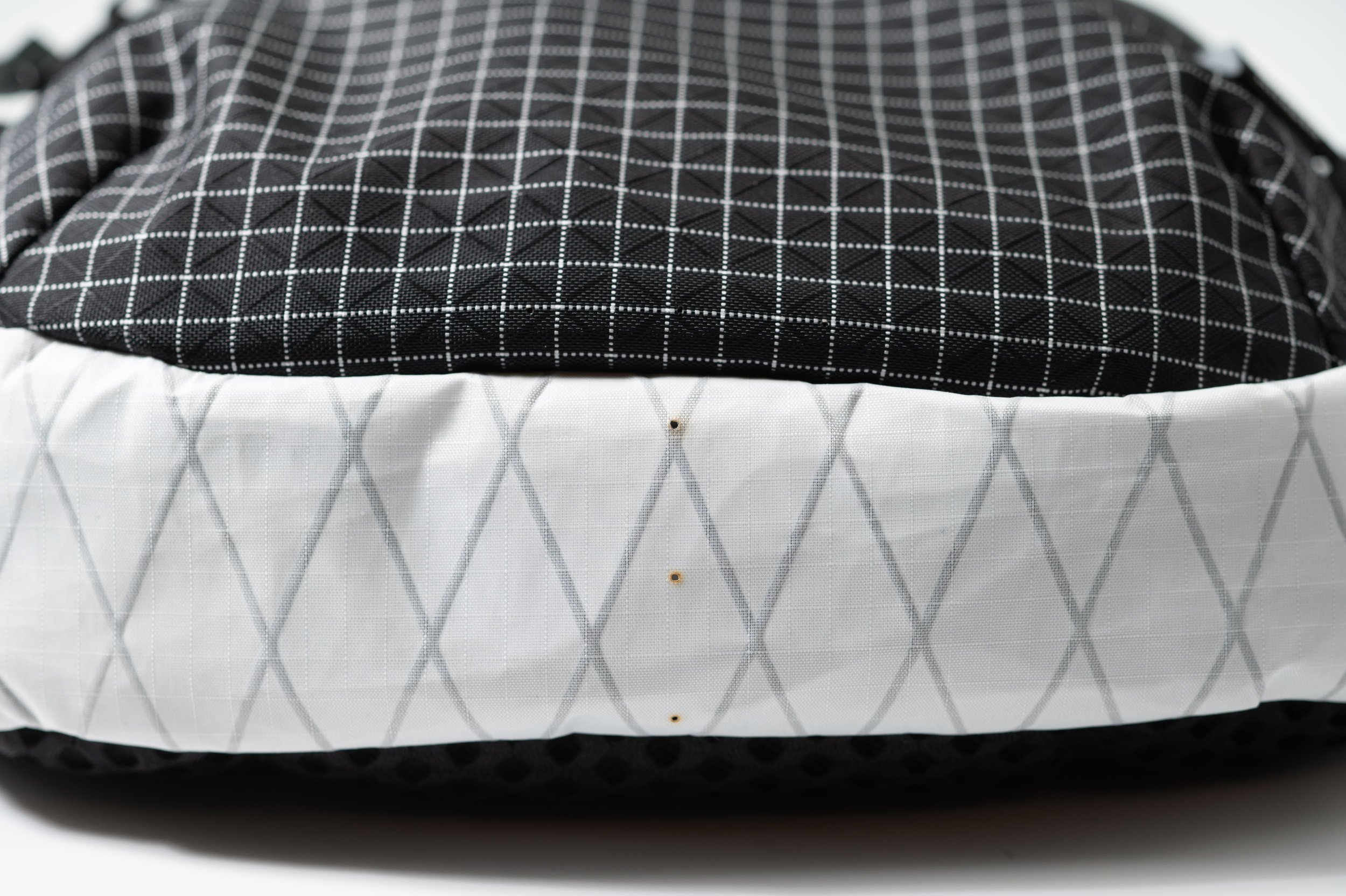 Image 9 of 17
Image 9 of 17

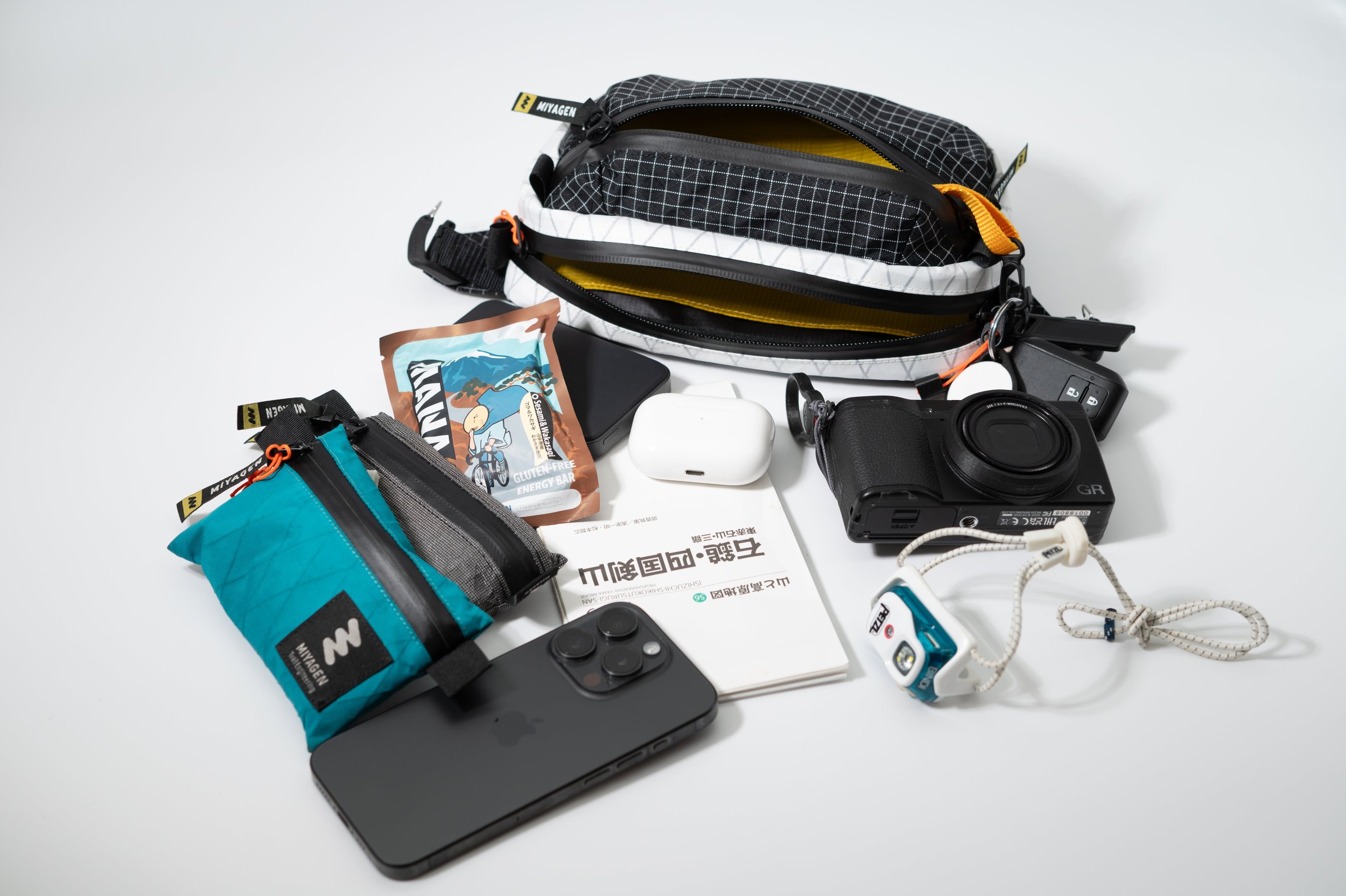 Image 10 of 17
Image 10 of 17

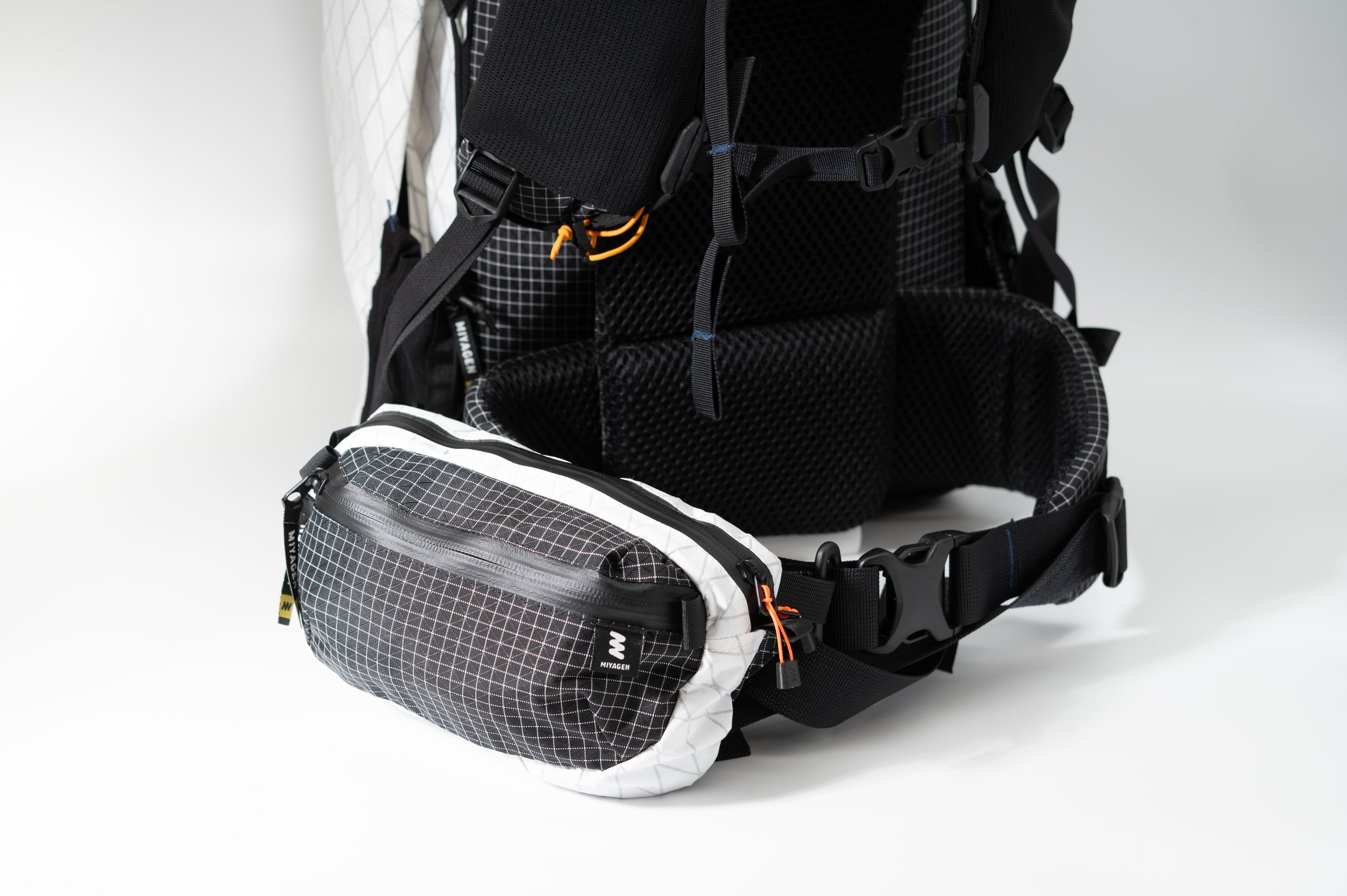 Image 11 of 17
Image 11 of 17

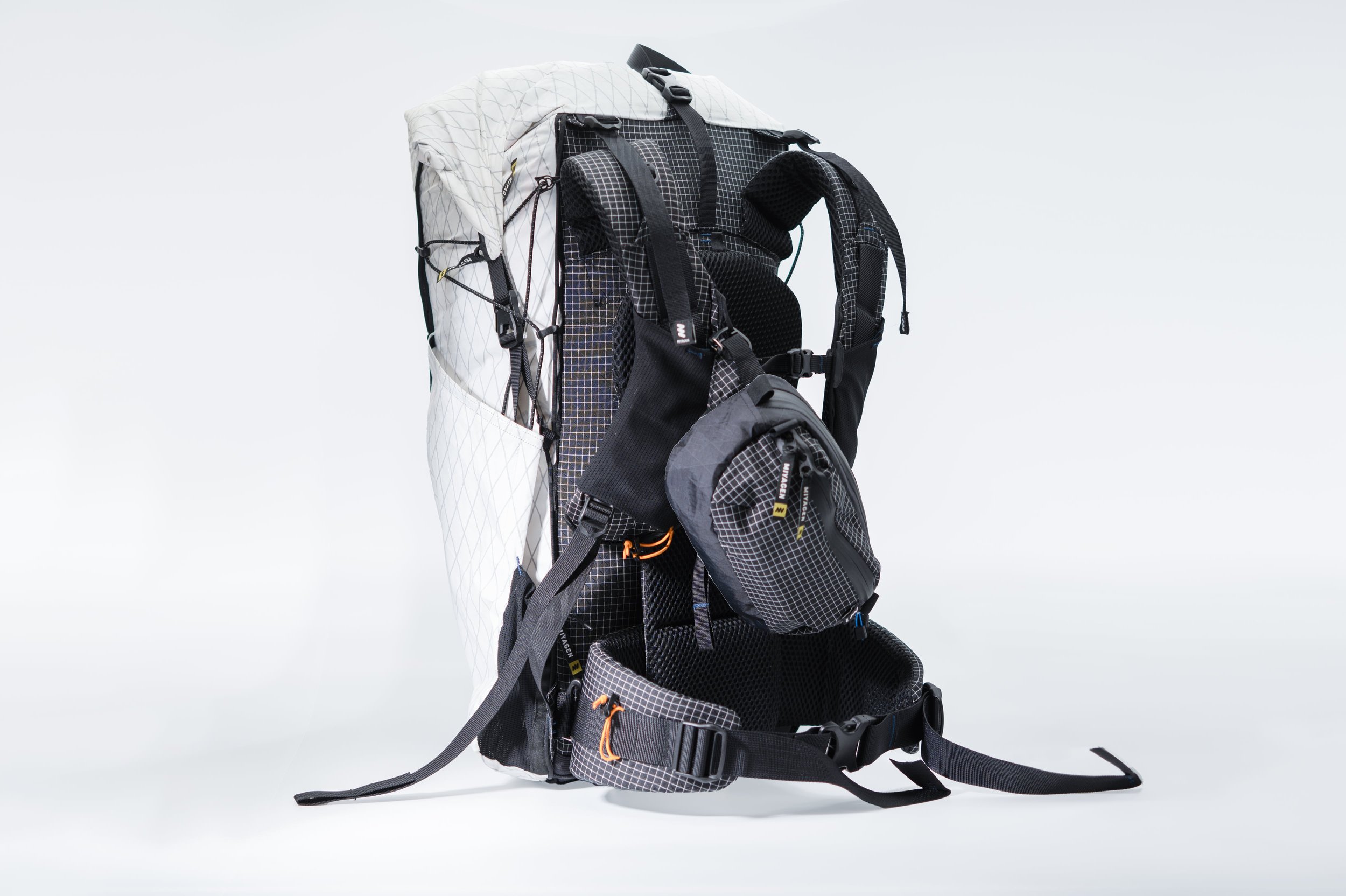 Image 12 of 17
Image 12 of 17

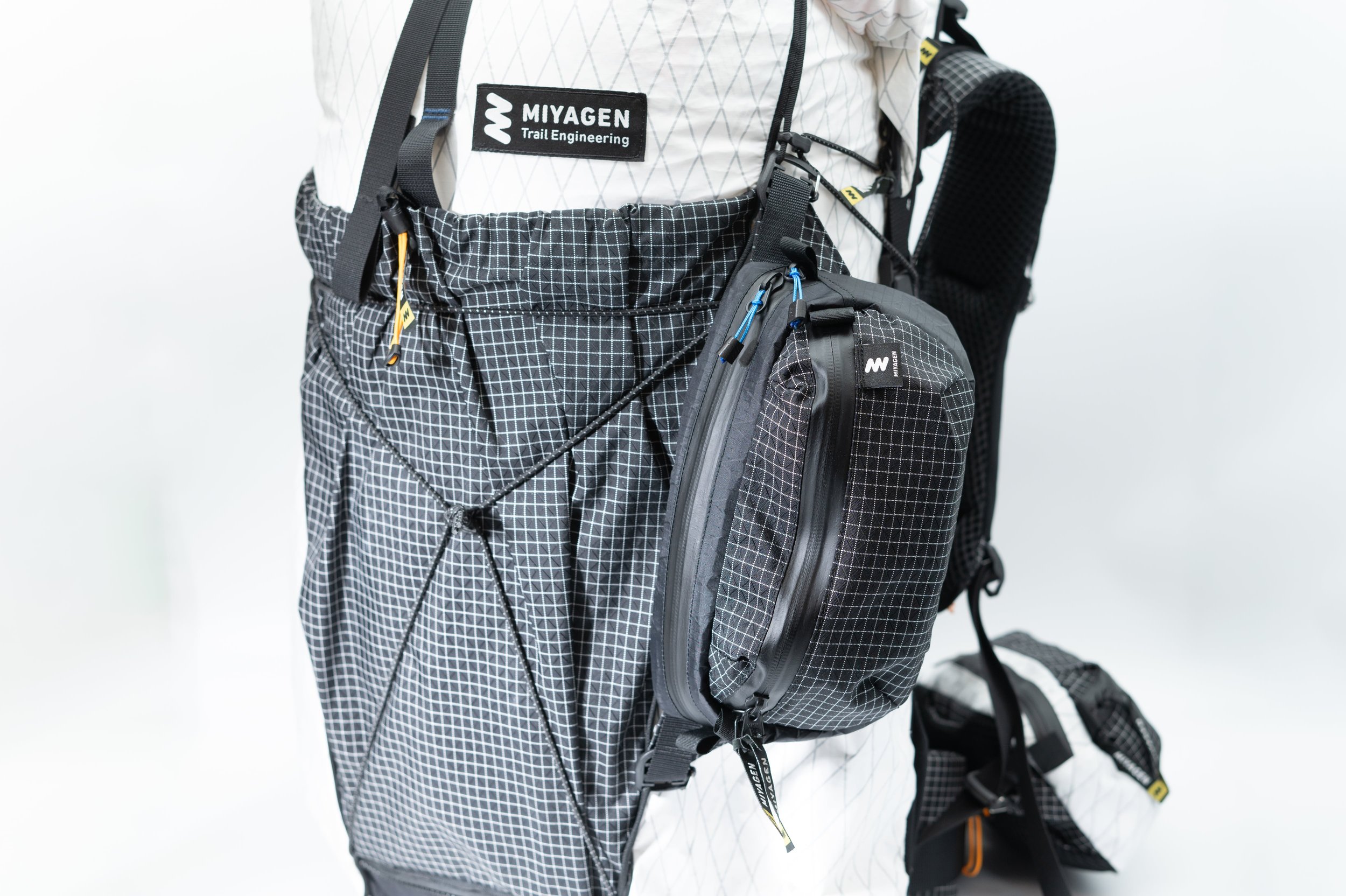 Image 13 of 17
Image 13 of 17

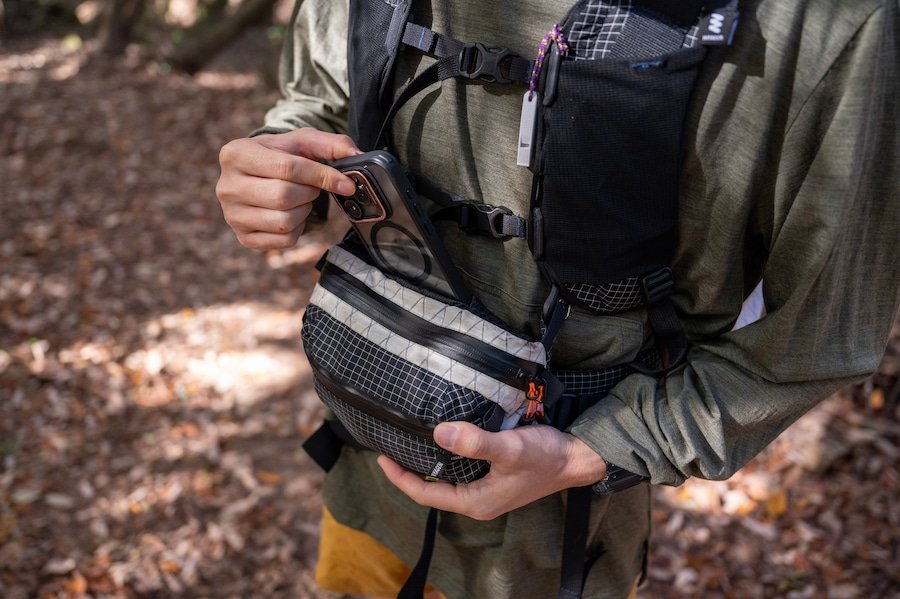 Image 14 of 17
Image 14 of 17

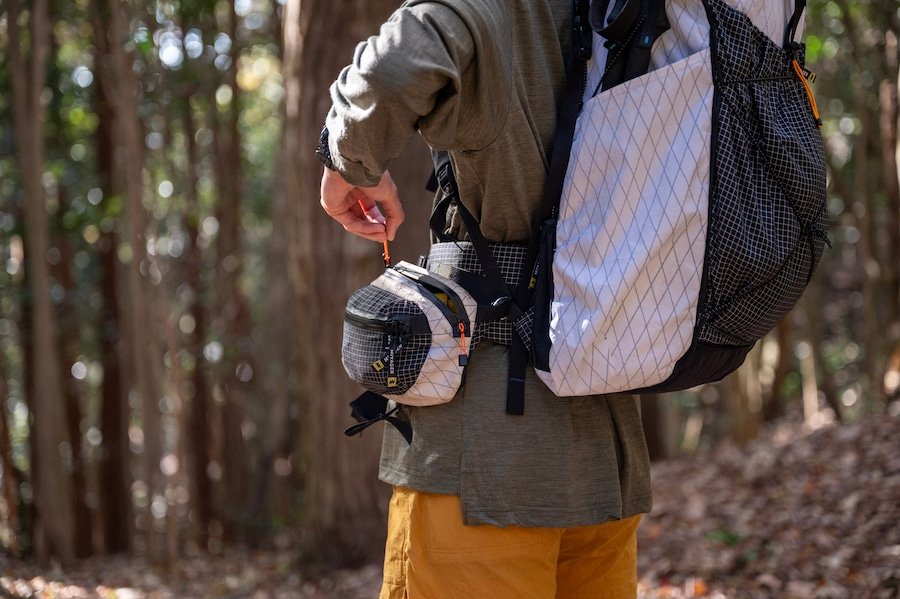 Image 15 of 17
Image 15 of 17

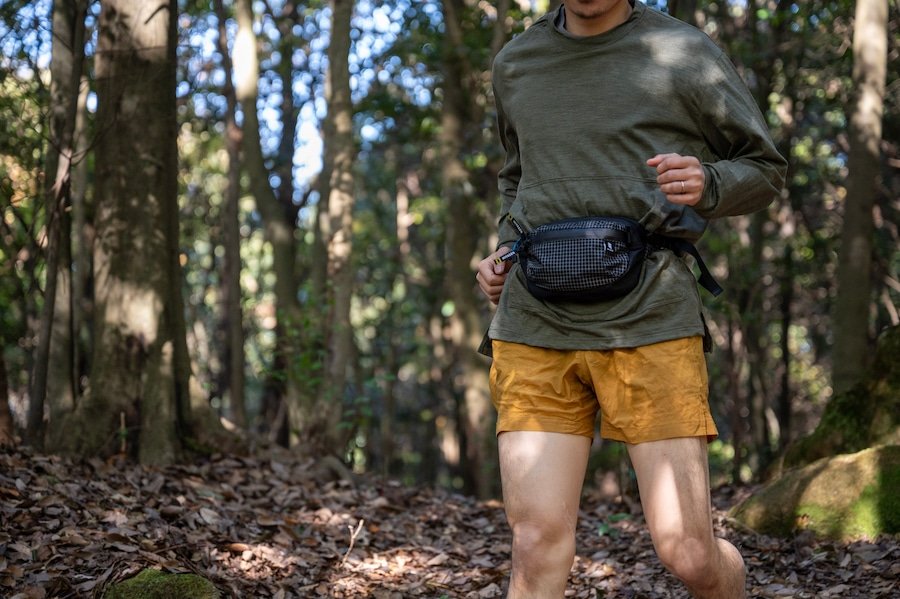 Image 16 of 17
Image 16 of 17

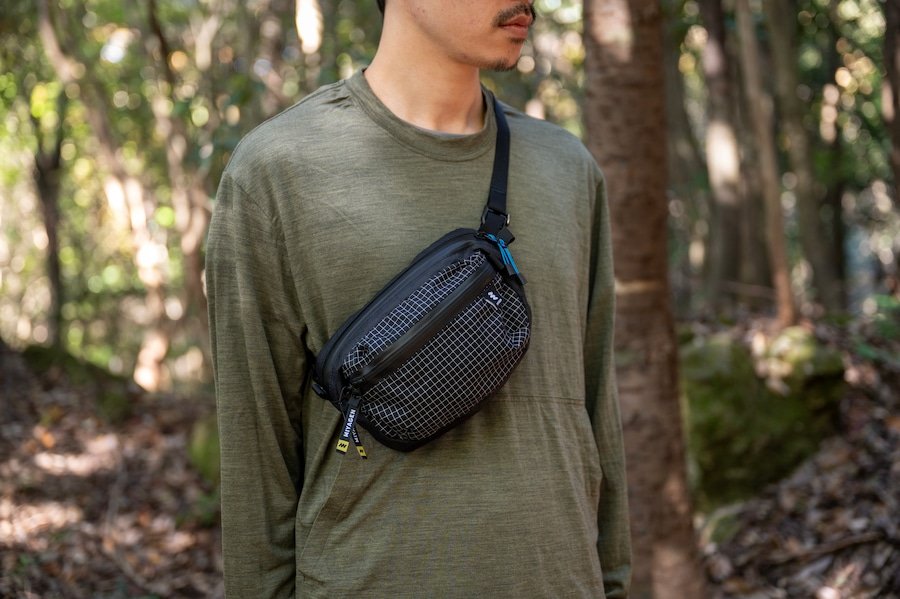 Image 17 of 17
Image 17 of 17


















MIYAGEN Trail Engineering OBSI PACK
◾︎ Spec
Weight: 94g (main body), 22g (belt)
Materials: Nylon, Dyneema (ultra-high-molecular-weight polyethylene), PU coating
Colors: Black, White, Gray
Capacity: Main body approx. 1.5L, Front pocket approx. 0.3L
Dimensions:
- Width: Approx. 23 cm
- Height: Approx. 16 cm
- Depth: Approx. 10 cm
Country of Manufacture: Japan (Aichi Prefecture)
◾︎ Development Notes (Written by Masaki Miyazaki)
At first, we were developing a classic-style sacoche. While a standard sacoche offers versatility with its simple construction that allows you to throw in just about anything, we also felt some drawbacks — it was difficult to organize the contents and the items would move around inside due to the simple pattern.
While hiking the PCT, I noticed that most hikers were using fanny packs or waist packs. That made me curious about their usability and comfort during hiking. After returning to Japan, I studied various brands’ fanny packs and explored design options.
Through considering both versatility and ease of use, I found that the standard shape was the most efficient and user-friendly for packing.
My father had used a fanny pack for many years in his work at a liquor store. So, I interviewed him about his sense of size and how he used it. Based on that, I came up with a fanny pack that could be used both for liquor store work and for hiking.
From there, I repeatedly tested the pack in real outdoor conditions, pursuing a classic fanny pack that was functional and easy to use.
Not too big, not too small
Can be folded when not in use
Holds more than it appears
Can fit a map horizontally
Can hold a compact camera or interchangeable lens
Zipper opens wide
Can hold bills and beer vouchers without folding, for use in a liquor store
◾︎ Design Concept (Written by Masaki Miyazaki)
As with our backpack designs, we utilized 3D CAD extensively to create a three-dimensional pattern. Thanks to CAD, we were able to achieve a design that offers excellent balance and ease of packing.
More than three different fabrics were strategically used depending on the functional requirements — prioritizing lightness in some areas, durability in others.
The front panel uses Dyneema ripstop nylon, which is highly resistant to tearing.
The sides are reinforced with X-Pac, which adds structure and stiffness in place of a frame.
The interior lining features ROBIC nylon, chosen for its smooth texture and vibrant color.
The body-facing side uses double raschel mesh, offering breathability and cushioning.
All fabrics have passed both real-world field testing and institutional performance testing. The outer materials are coated with jungle PU, which resists hydrolysis and is designed to withstand Japan’s hot and humid climate over time.
- Main Body
Special attention was given to the zipper angle for ease of access.
The zipper is angled to appear vertical when the pack is worn at the waist, allowing for a smooth opening motion. The zipper extends all the way to both ends, ensuring a wide opening. Each zipper pull is individually made with a 3D printer.
Inside the main compartment, on the body-facing side, there is a divider for inserting a hiking map. When not storing a map, it can also be used to hold a tenugui towel or something similar as added padding.
The main body is thick enough to fit items such as the RICOH GR III compact camera or a small interchangeable lens.
The interior fabric is 100D yellow ROBIC nylon, which improves visibility inside the pack thanks to its bright color.
- Front Pocket
This pocket is designed for small items such as keys and accessories. It features a gusset with depth, so it maintains shape even when the main compartment is full.
A key strap is included inside, allowing you to secure your keys.
The pocket is sized to hold a key, a bi-fold wallet, or earphones.
- Back Panel
Just like a backpack back panel, the rear side uses double raschel mesh for breathability and cushioning. A top-entry pocket is included for storing your smartphone.
There are also belt pass-through slots on both sides, allowing you to attach the pack to your favorite backpack straps or belts.
- Hooks & Belt
Both sides feature removable wire-gate buckles that make it easy to detach or reattach the belt. These buckles also allow the pack to be secured to various types of backpacks or gear.
Using additional accessories, the pack can also be mounted to a backpack waist belt or similar gear setup.
■ Usage Notice
While this product has undergone field testing, we do not guarantee it will be free from damage under all conditions.Please use it under your own responsibility and avoid applying excessive force. The maker is not liable for any damage or loss incurred during the use of this product.
Photos and text: MIYAGEN Trail Engineering
◾︎ Spec
Weight: 94g (main body), 22g (belt)
Materials: Nylon, Dyneema (ultra-high-molecular-weight polyethylene), PU coating
Colors: Black, White, Gray
Capacity: Main body approx. 1.5L, Front pocket approx. 0.3L
Dimensions:
- Width: Approx. 23 cm
- Height: Approx. 16 cm
- Depth: Approx. 10 cm
Country of Manufacture: Japan (Aichi Prefecture)
◾︎ Development Notes (Written by Masaki Miyazaki)
At first, we were developing a classic-style sacoche. While a standard sacoche offers versatility with its simple construction that allows you to throw in just about anything, we also felt some drawbacks — it was difficult to organize the contents and the items would move around inside due to the simple pattern.
While hiking the PCT, I noticed that most hikers were using fanny packs or waist packs. That made me curious about their usability and comfort during hiking. After returning to Japan, I studied various brands’ fanny packs and explored design options.
Through considering both versatility and ease of use, I found that the standard shape was the most efficient and user-friendly for packing.
My father had used a fanny pack for many years in his work at a liquor store. So, I interviewed him about his sense of size and how he used it. Based on that, I came up with a fanny pack that could be used both for liquor store work and for hiking.
From there, I repeatedly tested the pack in real outdoor conditions, pursuing a classic fanny pack that was functional and easy to use.
Not too big, not too small
Can be folded when not in use
Holds more than it appears
Can fit a map horizontally
Can hold a compact camera or interchangeable lens
Zipper opens wide
Can hold bills and beer vouchers without folding, for use in a liquor store
◾︎ Design Concept (Written by Masaki Miyazaki)
As with our backpack designs, we utilized 3D CAD extensively to create a three-dimensional pattern. Thanks to CAD, we were able to achieve a design that offers excellent balance and ease of packing.
More than three different fabrics were strategically used depending on the functional requirements — prioritizing lightness in some areas, durability in others.
The front panel uses Dyneema ripstop nylon, which is highly resistant to tearing.
The sides are reinforced with X-Pac, which adds structure and stiffness in place of a frame.
The interior lining features ROBIC nylon, chosen for its smooth texture and vibrant color.
The body-facing side uses double raschel mesh, offering breathability and cushioning.
All fabrics have passed both real-world field testing and institutional performance testing. The outer materials are coated with jungle PU, which resists hydrolysis and is designed to withstand Japan’s hot and humid climate over time.
- Main Body
Special attention was given to the zipper angle for ease of access.
The zipper is angled to appear vertical when the pack is worn at the waist, allowing for a smooth opening motion. The zipper extends all the way to both ends, ensuring a wide opening. Each zipper pull is individually made with a 3D printer.
Inside the main compartment, on the body-facing side, there is a divider for inserting a hiking map. When not storing a map, it can also be used to hold a tenugui towel or something similar as added padding.
The main body is thick enough to fit items such as the RICOH GR III compact camera or a small interchangeable lens.
The interior fabric is 100D yellow ROBIC nylon, which improves visibility inside the pack thanks to its bright color.
- Front Pocket
This pocket is designed for small items such as keys and accessories. It features a gusset with depth, so it maintains shape even when the main compartment is full.
A key strap is included inside, allowing you to secure your keys.
The pocket is sized to hold a key, a bi-fold wallet, or earphones.
- Back Panel
Just like a backpack back panel, the rear side uses double raschel mesh for breathability and cushioning. A top-entry pocket is included for storing your smartphone.
There are also belt pass-through slots on both sides, allowing you to attach the pack to your favorite backpack straps or belts.
- Hooks & Belt
Both sides feature removable wire-gate buckles that make it easy to detach or reattach the belt. These buckles also allow the pack to be secured to various types of backpacks or gear.
Using additional accessories, the pack can also be mounted to a backpack waist belt or similar gear setup.
■ Usage Notice
While this product has undergone field testing, we do not guarantee it will be free from damage under all conditions.Please use it under your own responsibility and avoid applying excessive force. The maker is not liable for any damage or loss incurred during the use of this product.
Photos and text: MIYAGEN Trail Engineering
